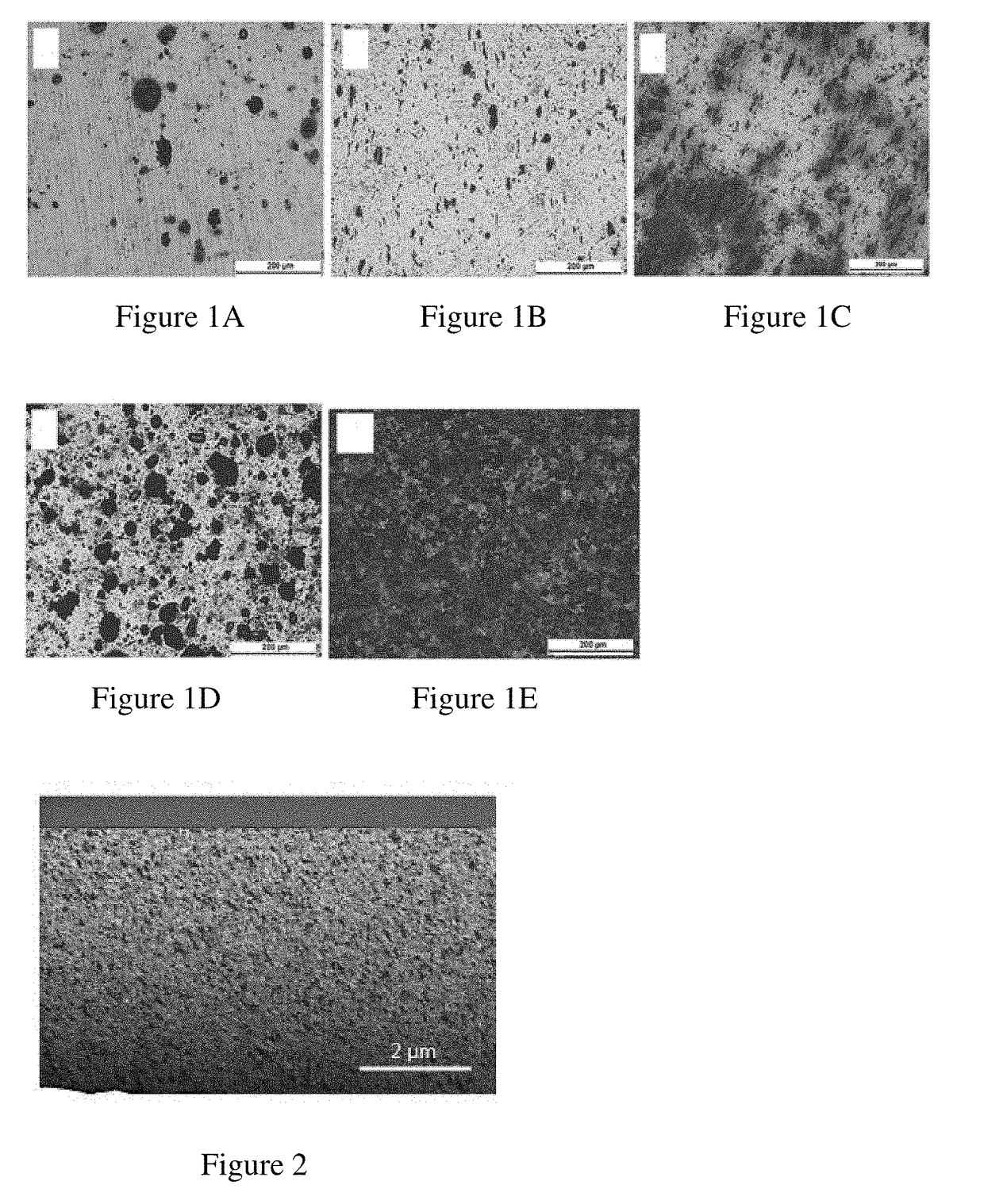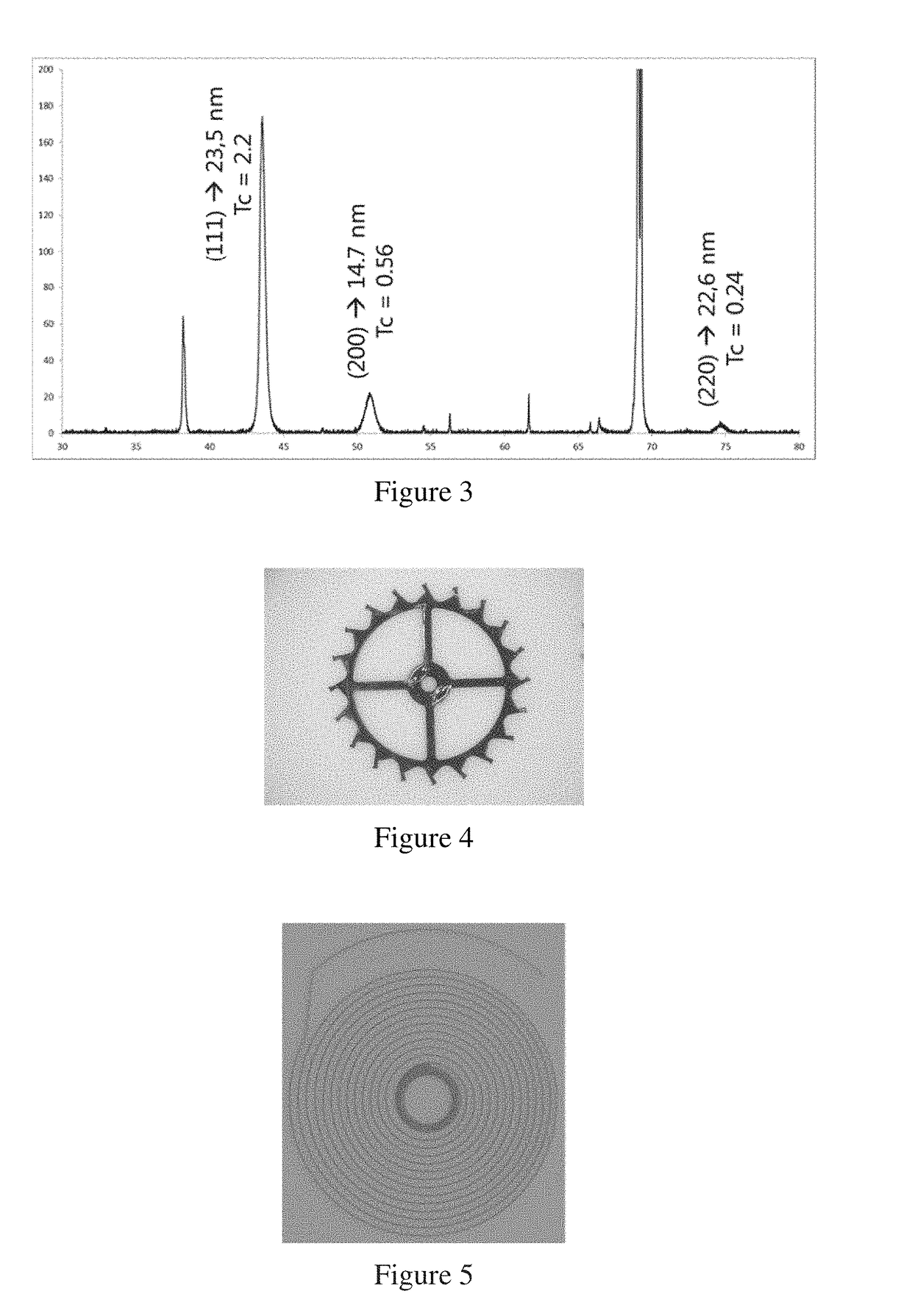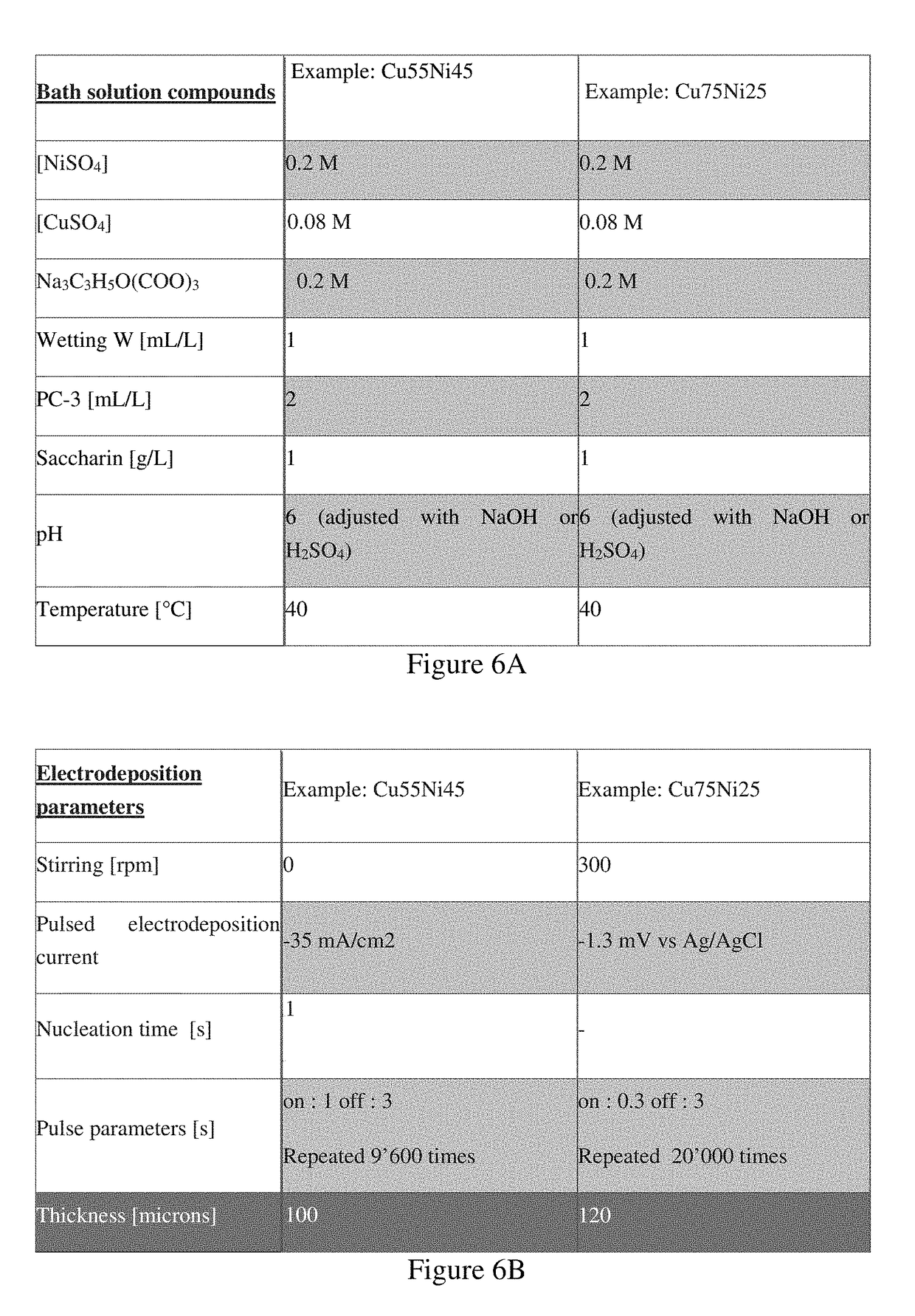HOROLOGICAL COMPONENT FORMED FROM AMAGNETIC BINARY CuNi ALLOY
a technology of amagnetic binary cuni and horological components, applied in the field of monolithic horological components, can solve problems such as brittle behaviour and parts with wear resistance defects, and achieve the effect of wide freedom in form design
- Summary
- Abstract
- Description
- Claims
- Application Information
AI Technical Summary
Benefits of technology
Problems solved by technology
Method used
Image
Examples
example 1
pring
[0066]The balance spring shown in FIG. 5 was produced from a Cu(55)Ni(45) alloy using a LiGA process as described above, with the operating parameters shown in the left hand column in the table of FIG. 6.
[0067]The part obtained had the following mechanical properties:
[0068]Young's modulus: 110±10 GPa
[0069]Hardness: 2.40±0.13 GPa
[0070]Operational frequency: 2 Hz
[0071]Amplitude: 217°-268° (mean, at 6 positions).
example 2
eel
[0072]The escape wheel shown in FIG. 4 was produced from a Cu(75)Ni(25) alloy using a LiGA process as described above, with the operating parameters shown in the right hand column in the table of FIG. 6.
example 3
position Bath Solutions
[0073]FIG. 6 shows the compositions of the bath solutions prepared using Ni and Cu sulphates.
[0074]The table in FIG. 7 shows 3 examples of compositions for bath solutions prepared using Ni sulphamate and, respectively, Cu citrate, sulphate and chloride.
[0075]In view of the above discussions relating to the structure and the process for fabrication of the horological components according to the present invention, it is clear that such a horological component enjoys a number of advantages and allows to achieve the aims defined in the introduction. It should in particular be pointed out that the geometrical two-dimensional shape of such a component may be selected with almost complete freedom by the timepiece designer. The choice of the Ni and Cu components of the binary alloy, which are entirely miscible, means that there is great freedom in selecting the relative concentrations of these two species as a function of the constraints imposed on the finished produc...
PUM
| Property | Measurement | Unit |
|---|---|---|
| Temperature | aaaaa | aaaaa |
| Time | aaaaa | aaaaa |
| Time | aaaaa | aaaaa |
Abstract
Description
Claims
Application Information
 Login to View More
Login to View More - R&D
- Intellectual Property
- Life Sciences
- Materials
- Tech Scout
- Unparalleled Data Quality
- Higher Quality Content
- 60% Fewer Hallucinations
Browse by: Latest US Patents, China's latest patents, Technical Efficacy Thesaurus, Application Domain, Technology Topic, Popular Technical Reports.
© 2025 PatSnap. All rights reserved.Legal|Privacy policy|Modern Slavery Act Transparency Statement|Sitemap|About US| Contact US: help@patsnap.com



